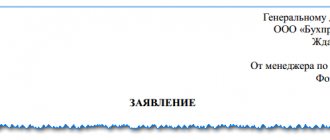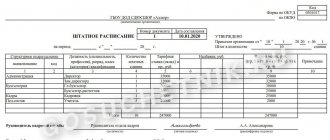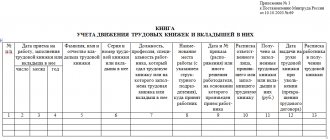“Painting” or “signature”, which is correct and what is the difference?
Contents Signature or signature is placed on documents. Painting of walls and ceilings exists in a building, in a temple, on everyday objects. In Russian vocabulary, we note two very similar words:
- signature
- painting.
Let’s make sure they are similar by looking at their composition:
- painting - prefix/root/ending.
- signature - prefix/root/suffix;
These cognate nouns differ only in the prefix, which adds its own meaning to each word, therefore these lexemes have different compatibility with other words and different uses in speech. Let's call these words, words that often cause difficulty in use. How to write correctly:
- familiarize yourself with the order against signature or signature?
- put a painting or signature;
- signature or signature under the document;
To find out how to correctly use these words in business speech, let’s clearly define the meaning of each lexeme. Only under this condition can one avoid a lexical error - confusion of paronyms, when one similar word is used incorrectly instead of another. For example, we distinguish between paronymous words:
- ;
- ;
- weapon - weapon.
The noun “signature” is formed from a cognate verb: sign → signature Let’s clarify the lexical:
- Handwritten surname under the text, drawing, etc.
to confirm your authorship or agreement with something. - An inscription on smth.
under smb. - Action by value Ch. sign
T.F.
Efremova. New dictionary of the Russian language.
M., Russian language, 2000This is how the word “signature” is used in literary texts: I never set foot in the office again, so bring all the papers for signature and so on to my room (Jack London. The Two Dianas)
Inspection against signature: how to register?
If you are entrusted with delivering some important letter or other document, hold it tightly in your hand and do not let go for a second, but hand it directly to the recipient.
Time waits). Here it is, the signature that was missing on that mysterious letter that he received last month (Alexandre Dumas.
Bushido In the article we will talk about one of the most important secretarial duties - familiarizing employees with the document for signature. Let's figure out how to register an acquaintance mark and what acquaintance options exist. Familiarizing employees with documents for signature is one of the duties of a secretary, but far from his favorite.
Regardless of our mood and workload, we can spend hours searching for the right workers to explain, give and take “autographs.” What is it for? The goals of familiarizing employees with documents are simple and obvious: 1.
Timely execution of instructions from management.
The employee to whom the assignment is given must know about this, otherwise the assignment will remain unfulfilled.
2. Compliance with the requirements of labor legislation, in case of improper fulfillment of which the document becomes invalid or the organization faces a fine. 3. Streamlining certain organizational and production processes. Next, we will consider how the acquaintance mark is issued in various types of documents.
An order is the most important administrative document with the help of which all aspects of the organization’s activities are regulated. There are three types of orders: 1) for personnel; 2) on administrative and economic activities; 3) by main activity.
This is a special group of orders with the help of which the personnel of an enterprise is managed: hiring, dismissal, personnel changes and other actions leading to changes in work activities, as well as penalties and incentives, business trips and vacations.
Therefore, the fact that the employee is familiar with such orders must be documented. If the procedure for familiarization established by law is violated, the document may not come into force.
This applies, in particular, to orders to impose penalties. For orders on admission, dismissal,
Regulation of creation of orders
The rules for creating orders at the federal level are described in the documents:
- having a voluntary procedure for application: GOST R 6.30-2003 “Unified documentation systems. Unified system of organizational and administrative documentation. Requirements for document preparation";
- “Organizational and administrative documentation. Documentation requirements. Methodological recommendations for the implementation of GOST R 6.30-2003" (hereinafter - Methodological recommendations for GOST R 6.30-2003);
- Methodological recommendations for the development of instructions for office work in federal executive authorities, approved. by order of Rosarkhiv dated December 23, 2009 No. 76 (hereinafter referred to as the Recommendations for executive authorities);
However, no one prohibits commercial companies from using all these documents in order to bring the quality of their office processes to the proper level. Based on the listed documents, it is recommended to draw up your own rules for preparing orders and consolidate them in the Office Work Instructions (see Example 1).
The specified regulatory framework contains the composition of the order details and the rules for their execution. Recommendations for executive authorities and the FCS Instructions also explain the procedure for preparing joint orders.
Fragment of the Organization's Office Management Instructions dedicated to the creation of orders
5.1. Orders formalize decisions on operational, organizational, personnel, administrative, economic and other issues of the internal work of Skala LLC (hereinafter referred to as the Company).
5.2. Draft orders are prepared by the Company's structural divisions both on the basis of instructions from the General Director and on their own initiative. Draft orders on personnel issues are prepared by the Company's HR department based on relevant submissions.
5.3. Orders are signed by the General Director of the Company, and in his absence - by the person replacing him. In the case of a proactive submission of a draft order, it is accompanied by a certificate that contains a brief summary of the essence of the order, the rationale for its necessity, as well as information on the basis on which the draft was prepared and with whom it was agreed.
5.4. Draft orders are printed on the established forms (Appendix 1) in two copies.
5.5. The order has the following details: name of the organization; type of document (ORDER), date, registration number, place of compilation (publication) of the document, title to the text, text, signature of the official, approval visas, note about the executor.
5.5.1. The title to the text of the order must briefly and accurately reflect the content of the text of the order. There is no period at the end of the title.
5.5.2. The text of the order is separated from the title by 2-3 line spacing and aligned along the left and right borders of the text field. The first line of a paragraph begins 1.25 cm from the left edge of the text field.
5.5.3. The text of the order consists of two parts: stating (preamble) and administrative.
The ascertaining part briefly outlines the goals and objectives, facts and events that served as the basis for issuing the order. It may begin with the words “for the purpose”, “in pursuance”, etc. If the order is issued on the basis of another document, then the ascertaining part indicates the name of this document, the name of the body that issued the document, the date, registration number and title to the text.
The preamble is separated from the administrative part by the word “I order”, which is written on a new line in capital letters. It is followed by a colon.
The administrative part of the order contains instructions indicating the executor(s) and deadlines for execution.
The administrative part of the order is divided into paragraphs and subparagraphs, which are numbered in Arabic numerals. One item must correspond to one instruction. Actions of a similar nature can be listed in one paragraph. Structural divisions of the Company or specific officials are indicated as performers. The last paragraph of the administrative part contains information about the official who is entrusted with monitoring the execution of the order.
If an order changes, cancels or supplements a previously issued document or some of its provisions, then one of the paragraphs of the administrative part of the text must contain a link to the document being canceled (document clause) indicating its date, number and title. The text of the paragraph begins with the words “Recognize as invalid...”.
5.5.4. Visas include the positions of the visa person, personal signatures, transcript of signatures and date. Visas are affixed on the back of the last sheet of the order or on a separate approval (endorsement) sheet.
5.5.5. The signature consists of the title of the position of the person who signed the document, a personal signature and a transcript of the signature (initials, surname). The job title is printed from the left border of the text field, the initials and surname are printed from the right border of the text field.
5.5.6. The mark about the executor includes the initials and surname of the executor of the document and his internal four-digit phone number. The executor's mark is located on the reverse side of the last sheet of the document in the lower left corner.
5.6. The divisions (officials) to whose attention the order is brought are listed in the distribution index, which the executor prepares along with the draft order.
5.7. Attachments to the order are endorsed by the head of the structural unit that prepared the project. If there are several applications, they are numbered.
5.8. The order is printed in Times New Roman font. The font size for all details, except for the name of the organization and the name of the document type, is 12. The names of the organization and the type of document are typed in capital letters and aligned in the center; font size – 16, style – bold.
5.9. On the back of the last sheet of the draft order submitted for approval, the visa of the executor and the head of the structural unit that is developing this project is affixed.
5.10. All draft orders undergo legal (legal) examination by the Company’s legal service.
5.11. Draft orders affecting financial legal relations are subject to approval by the Company's accounting department.
5.12. Structural divisions review draft orders within two working days following the day they are received for legal examination or approval.
5.13. Objections and comments to the draft order are set out on the certificate attached to the draft. If fundamental changes are made to the draft order during the approval process, it is subject to reprinting and re-approval.
5.14. Making changes to the signed order, as well as to the agreed draft document, is not allowed.
5.15. Responsibility for the high-quality preparation of draft orders, their legal (legal) examination and approval lies with the heads of the Company’s structural divisions that develop the draft orders.
5.16. The office monitors the correct execution of draft orders.
5.17. Orders signed by the general director are sent to the office for registration. Orders are numbered sequentially within a calendar year. Orders on core activities, personnel and administrative and economic issues are numbered separately and assigned letter indices to the numbers:
OD – orders for core activities,
LS - orders for personnel,
AH - orders on administrative and economic issues.
Letter indices are written after the order number and are separated from it by a slash, for example: 123/OD.
The date of the order is the date of its signing.
5.18. One copy of the order is given to the executor. The second remains in the office and is placed in the file.
5.19. Responsibility for compiling an index for distributing the order to all interested parties lies with the head of the structural unit that developed the draft order. The head of the office is responsible for familiarizing interested employees with the order, according to the distribution index.
Workshop on the Labor Code of the Russian Federation: what is the difference between a signature and a painting
The Labor Code of the Russian Federation has two terms: “signature” and “signature”. The first occurs 20 times in the text, the second - 17.
“Signature” is a person’s own handwriting of his/her own surname, name, initials or parts (elements) thereof, usually containing individual characteristics that make it possible to visually distinguish the signature of one person from the signature of another.
Let's see how the term “signature” is used in the Labor Code: “An employment contract is concluded in writing, drawn up in two copies, each of which is signed by the parties.
The employee’s receipt of a copy of the employment contract must be confirmed by the employee’s signature on the copy of the employment contract kept by the employer.” (Art.
66 Labor Code of the Russian Federation). The term is used to indicate the handwritten signature of an employee (representative, guardian, etc.) in any document that must be signed by that person. What then is meant by the word “painting” in the Labor Code? Is the employee’s handwritten signature a “signature”?
The term “signature” is used to confirm that the employee has familiarized himself with any information or document that has already been drawn up and signed by other persons.
For example: “A job order is announced to the employee against signature. When hiring (before signing an employment contract), the employer is obliged to familiarize the employee with the internal labor regulations and other local regulations against signature” (Article 68 of the Labor Code of the Russian Federation). Who should do the “painting”? Employee or employer?
Is this “signature” some kind of document, for example, a log of briefings or a log of familiarization with orders? Or is this not a document, but some kind of record in a document?
Where should this “painting” be done in this case? In an order, in a journal, in a statement? For example, will the requirement of Article 22 of the Labor Code of the Russian Federation be met if the employer’s representative writes in the statement: “With order No. 1 of 01/01/2020, driver Ivanov I.
I. familiarized. Clerk A.A. Petrova? Author
How to draw up a document
The familiarization sheet can be written on a simple A4 sheet or on the company’s letterhead - it does not matter, just as whether it will be drawn up by hand or on a computer.
It is important that the document contains the original signatures of those employees of the enterprise to whom it concerns.
It is not necessary to certify the form with the organization’s seal, since starting from 2020, legal entities have the right not to use stamps to certify their papers (unless otherwise stated in the company’s constituent documentation).
After creation, the sheet must be endorsed in the internal documents journal.
Familiarization with the order against signature
In order for the manager’s order to have legal force for execution, employees must be familiar with it. In some cases, familiarization must be confirmed by the signatures of employees who are involved in this document.
Today in the article we will figure out how you can collect signatures for an order, how to draw up a familiarization sheet, and what documents you need to familiarize workers with for signature.
From this article you will learn:
- what orders should be familiarized to workers against signature;
- For which documents is it necessary to familiarize yourself with signature;
- How does one get acquainted with the promotion order?
According to the labor legislation of the Russian Federation, there are categories of orders, familiarization of employees with which is mandatory. If employees are not familiarized with them on time, then such documents may lose their validity, and in some cases the company may face a fine.
For example, if an employee received a penalty, but was not familiarized with the manager’s order within five days, the penalty cannot be imposed.
There are three types:
- on administrative and economic issues (concerning issues such as the operation of the building, transport, security issues, etc.).
- on the main activity (published by the manager and serves to ensure the main and operational activities of the company);
- by personnel (reflects all aspects of the labor relationship between employee and employer);
The general rule is that all persons involved in the document must be familiar with it upon signature.
Let's figure out who is involved in the orders. The subjects of orders for personnel are the employees whose names appear in the order, and the subjects of orders for the main activities are their executors, that is, those employees who are entrusted with the execution of the order.
For violation of the regulations for the storage and execution of these types of documents, the responsible person may be held administratively liable in the form of a warning or a fine.
Types of orders in an organization
Usually, the entire body of orders of an organization is divided into two streams: by main activity and by personnel. The preschool education service is responsible for the former; the latter, like the apple of an eye, is protected by the personnel department. In addition to the functional purpose, there is another significant difference between these types of orders, namely, their storage period.
Let us turn to the List of standard management archival documents (see below in the text for its fragment with Article 19; hereinafter referred to as the 2010 List). And we will see that orders for core activities are stored permanently, while for personnel, with rare exceptions, they are stored for 75 years. And then it turns out that the List identifies a third type of orders - on administrative and economic issues, which are proposed to be stored for 5 years.
At the same time, none of the Russian regulations on preschool educational institutions contain information regarding the differences between orders on core activities and orders on administrative and economic issues. Orders for personnel are also not always easy to separate from orders for core activities. Clerks have a natural question: which category should this or that order be classified into? After all, the period, place and conditions for storing the document depend on this.
Let's look again at the 2010 List. Its section 10 is entirely devoted to administrative and economic issues
. It is advisable to determine the range of topics for the relevant orders based on this section.
The list includes:
- compliance with internal regulations;
- operation of buildings and premises;
- transport services, internal communications;
- ensuring the security of the organization.
At the same time, we should not forget that the first point of this list is closely related to labor relations with employees. So, if it is decided to bring an employee to disciplinary liability for violating the mentioned rules, then the order on this will already fall under the “personnel” category.
The task of orders for personnel
– reflect the manager’s decisions regarding
the organization’s personnel policy
.
All orders on labor relations with an employee (workers)
are orders on personnel, they reflect the hiring, transfer and dismissal, rewards and punishments, personal data, etc.
Please note one important point:
- Until 2013, many personnel orders were compiled according to unified forms approved by the State Statistics Committee (Resolution of the State Statistics Committee of the Russian Federation dated January 5, 2004 No. 1 “On approval of unified forms of primary accounting documentation for labor accounting and its payment”). If there was no approved form, then such an order was issued in any form.
- But from January 1, 2013, the forms of primary accounting documents contained in albums of unified forms of primary accounting documentation are not mandatory for use (with a few exceptions). In this situation, the unified forms of personnel documents fell under the general procedure and are no longer valid. Many organizations, realizing that HR specialists were accustomed to the previously used forms, simply approved them for further use in their organizations. Thus, these forms continued their legal life, only they changed the approving document in their “header”. We recommend everyone to do the same!
See the article “How to approve document forms within an organization?”
And further in the article we will talk only about the execution of orders according to the general rules that have developed for organizational and administrative documents. Orders on core activities and administrative and economic issues were always drawn up according to it. This form in relation to personnel orders was previously called “arbitrary” (after all, some of them were compiled according to it even before 2013).
List the topics of orders for core activities
is not possible: it is too extensive and largely depends on the specifics of the organization’s activities. We have given the main categories of such orders and examples for them in Table 1.
Main categories of orders for core activities and examples for them
Thus, to determine the type of order, the exclusion method remains: if the document is not drawn up on an administrative and economic issue and does not document labor relations with an employee or group of employees, then it is considered an order on the main activity.
Familiarization with documents for signature in labor relations
What does the employee’s handwritten signature in the familiarization column mean?
What are the consequences of signing? We'll look into it in the article. How can an employer confirm that an employee has read the administrative act issued in relation to him and understood its meaning and content? After all, a lot depends on whether the employee is familiar with such acts and whether he understands what the employer wants.
In particular, the ability to demand the execution of this act, the ability to control the result, etc.
The simplest and most logical way to confirm that the employee has seen the document is to have his personal signature.
This method has been developed by business practices and customs for a long time, and it is successfully applied.
At the same time, it is important that the employer has evidence that the employee signed a signature in confirmation of a specific fact.
In other words, an ordinary signature on a blank sheet of paper will not be enough; any regulatory authority, and even the employee himself, can easily challenge that the signature was placed in connection with other circumstances, but not in confirmation of the fact of familiarization. Thus, familiarization against signature (or under - these concepts are identical) in labor relations means the procedure for bringing to the attention of the employee the contents of the document and recording the fact of such an action.
Similar familiarization procedures are used not only in labor law.
For example, in procedural relations, where the court acquaints the participants in the process with their rights, in criminal law, where the witness gets acquainted with the contents of the drawn up protocol, in administrative law - when familiarizing himself with the decision made, in corporate law, in civil law. In almost all industries where written documents are drawn up that affect the rights and interests of individuals, it is necessary to record the facts of bringing their content to the attention of people, i.e.
What are regulations
Regulatory acts include any documents that are developed at an enterprise and that are aimed at organizing relations between an employer and a subordinate, forming a work process, creating internal and external connections, etc.
In particular, the following are considered regulatory acts:
- orders and instructions from management;
- inner order rules;
- occupational health and safety rules;
- other similar documents.
It should be noted that regulations may be temporary or permanent, but they are always strictly valid only in the company in which they are issued and issued on behalf of the director or administration of the company.
All internal regulations must be developed strictly in accordance with the legislation of the Russian Federation and take into account the interests of both the employer and his subordinates.
Familiarization with orders against signature: Labor Code of the Russian Federation
› Article current as of: October 2020 Statement of claim to cancel the order of disciplinary action For improper performance of job duties, employees may be subject to disciplinary sanctions.
The main types of disciplinary sanctions are reprimand, reprimand and dismissal.
Separate provisions may provide for other types of penalties for certain categories of employees. Disciplinary action must be applied by the employer on legal grounds, the employee’s guilt must be established, the circumstances under which the violation was committed, and the severity of the offense must be assessed. Dear readers! Our articles talk about typical ways to solve legal issues, but each case is unique. If you want to find out how to solve your particular problem, please contact the online consultant form on the right or call the numbers provided on the website.
It's fast and free! WATCH THE VIDEO ON THE TOPIC: Ideal grounds for dismissal - Elena A.
Ponomareva Articles on the topic (click to view) Is it possible for employees to give a photocopy of the order, and on it make an electronic link to the appendices to the order.
At the same time, ask to sign for familiarization with the order? By name? Each person must be approached personally or employees must come up to meet each other and sign.
I'm just interested in the exact answer. If you are instructed to deliver some important letter or other document, hold it tightly in your hand and do not let go for a second, but hand it directly to the recipient. In the article we will talk about one of the most important secretarial duties - familiarizing employees with the document for signature. Let's figure out how to register an acquaintance mark and what acquaintance options exist.
Familiarizing employees with documents for signature is one of the duties of a secretary, but far from his favorite. Why is this necessary? The goals of familiarizing employees with documents are simple and obvious:.
Timely execution of instructions from management. The employee to whom the assignment is given must know about this, otherwise the assignment will remain unfulfilled.
Sample magazine for familiarizing yourself with a collective agreement
For convenience, an organization can introduce a single journal that reflects information about employees’ familiarization with all internal documents, and not just collective agreements.
Its form is also not approved by the legislator, but the journal can be found at the link at the beginning of the article.
It doesn’t matter how the fact that employees are familiar with internal documents is recorded – in a familiarization sheet or in a special journal. The main thing is that during the inspection, the auditors can be provided with a document confirming the fact that all employees are familiar with the internal documents. Otherwise, the employer may be held liable under Part 1 of Art. 5.27 Code of Administrative Offenses of the Russian Federation.
***
Thus, workers can be introduced to the collective agreement either using a familiarization sheet or a special magazine. An order is not required to carry out the procedure.
Great secretary
How to speak and write correctly: signature or signature?
“Signing” seems to hurt the ears, although the respected Labor Code proposes that workers be familiarized with various documents “under signature.” And in the words “under signature,” as someone aptly said, “the tongue stumbles.”
In the article we will figure out how it is correct from the point of view of the Russian language. From the point of view of the norms of the literary Russian language, it is correct to say “signature” and “under signature”. Firstly, in office work there is a “signature” requisite.
It is correct to say “sign” (offering to sign to confirm receipt of a salary or other material assets), “sign”, “sign the documents”.
Thus, in orders and instructions we recommend using the following wording:
“to familiarize the employees of the structural unit against signature”
Secondly, a large explanatory dictionary of the Russian language (for example, S.A.
Kuznetsova, in the author’s edition of 2014) informs us that “A signature is a surname put personally under something (under a text, under a picture, under a table, under a drawing, and so on). Thirdly, the noun “signature”, according to most philologists, was formed from the verb “to sign”. Signatures can be placed on receipts, contracts, financial statements and travel reports.
A signature is a personal autograph, an individually stylized spelling of a person’s last name. And, in addition, the signature serves as proof of the authenticity of the document and one of the few details that gives it legal force.
"Painting" is similar to the word "signature". However, a secretary should not use it in everyday work. This is a word from artists' studios, not offices.
You can paint a wall or ceiling.
You can paint the face of a matryoshka doll on a wooden block or paint a box beautifully assembled by a cabinetmaker. It is this image that must be remembered when choosing whether our colleague will sign or sign the document. What is the reason for the confusion? There are intermediate words, such as: inventory, receipt.
Familiarization with the order against signature
Free consultation by phone Contents Is it possible to give employees a photocopy of the order, and on it make a link in electronic form to the appendices to the order. How do you imagine an electronic link on the paper version of the order - purely technically? At the same time, ask them to sign for familiarization with the order? Can.
He will be familiar with the order, but not with the documents to which “a link is made.” An anonymous user writes: ——————————————————- > The link in electronic form will contain > name of the folder, subfolder and name of > the document. For example: General > documents/Orders/Orders 2012/On the contents> of motor transport.
What's wrong here? How will you determine the contents of the file?
By name? print screens? And if the server crashes along with this folder, how will you demonstrate the document you were familiar with?
and if over time there is a movement of folders, files, etc. Mazukhina Anna Writes: ——————————————————- > One copy of the order with all attachments and > signatures for familiarization is stored in in fact.
The question > is about not printing out 20-30 sheets of > sheets for each of the 10 > people who have read the appendix to the order, but giving a link to the storage location in > electronic form. > print it out once, pass it around, everyone signs in it one by one. Approach each person personally or employees must come up to get acquainted and sign.
I'm just interested in the exact answer.
“As you agree” is not suitable. establish in the PVTR the rules for familiarizing workers with orders (make additions, familiarize workers with the new edition against signature), after 2 months you can apply them.
exactly. And “in which version to install” is up to you, you are making changes to the LNA. forum.garant.ru If you are instructed to deliver some important letter or other document, hold it tightly in your hand and don’t let go for a second, but hand it directly to the recipient. In the article we will talk about one of the most important secretarial duties - familiarizing employees with the document for signature.
Sample
If it is necessary to familiarize several employees of an enterprise with a document, then a familiarization sheet is generated for this purpose. It is allowed to use any form. Some companies draw up a special template according to which the employee must draw up this document.
Although the exact form of this document is not available, the correct structure must be taken into account when drafting it.
The following information must be included in it:
- full name of the company;
- document's name;
- date of its formation;
- number and contents of the order;
- numbers of all employees;
- Full name of the company's employees;
- the positions they occupy;
- the date when company employees become familiar with the contents of the order;
- signatures of all hired specialists.
How to fill out the staffing table? See here.
The sheet is compiled in the form of a convenient table, which can include other columns if necessary. For example, you can indicate in which department of the enterprise a particular employee works.
If the company has many employees who must familiarize themselves with the order, then several sheets may be needed. All of them are fastened with a strong thread or a stapler, and are also numbered.
Design rules
When preparing this documentation, the following rules are taken into account:
- the sheet is made exclusively in one copy;
- To create it, an A4 sheet is used, and the organization’s letterhead can also be used;
- information is entered by hand or using a computer;
- original signatures of all employees specified in the order are required;
- there is no mandatory requirement for a company seal, since from 2020 documentation is not required to be endorsed with a seal, unless otherwise provided in local regulatory documents;
- The sheet must be recorded in a special journal designed to record the company’s internal documentation.
Does the employee have to be familiar with the order? Watch the video:
The specialist appointed as the responsible person should be aware of all such rules. The information sheet can be found below.
Familiarize everyone with the order against signature
Contents: Total found: 33 Good afternoon!
How to correctly write to familiarize an employee with an order “under signature” or “against signature”. Thank you! Answer from the Russian language help desk Correct: against signature or receipt.
What is the correct way: to familiarize yourself with signature or signature? Answer from the Russian language help desk Correct: against signature or receipt. Is the word “signature” used correctly in the sentence: “Employers are obliged, before signing an employment contract with an employee, to familiarize him with the organization’s charter against signature.”
Thank you. Answer from the Russian language help desk No, the word signature should be used in this meaning.
Where are commas placed in the sentence: The order must be delivered to the persons specified in the order against signature and why? Answer from the Russian language help service Correct: The order should be brought to the attention of the persons specified in the order, against signature. The attributive phrase that comes after the word being defined is isolated.
Please note that in this meaning it is correct to use the word signature. Answer from the Russian language help desk Correct: .
intelligence. are strictly confidential. In the labor laws of the Russian Federation and Kazakhstan, the article on the imposition of a disciplinary sanction states that the employee must be familiarized with the LISTING. Previously, it was required to sign.
Which is correct? Answer from the Russian language help desk Correct: against signature or against receipt. Hello. According to the Dictionary of Difficulties on your site, when using the expressions “under signature” or “under signature” in documents, the correct spelling is “under signature” (familiarize employees with the instructions for signing).
How, in this case, should one treat the norm enshrined, for example, in the Labor Code, where another (it turns out incorrect) spelling is found: an employer’s order (instruction) on hiring is announced to the employee against signature; obliged to familiarize the employee against signature (Article 68)?
Answer from the Russian language help service The Labor Code does not regulate the rules of the Russian language. We believe that in this case there was a speech error in the Labor Code.
Document structure
There are 2 main approaches to the approval of the journal in question, as well as to the formation of its structure.
1. Creation of a document that is an annex to the employee’s employment contract.
This document:
- signed only by the employee with whom the employment contract is concluded;
- includes a list only of those acts that apply to a specific employee.
2. Creation of an independent regulatory document that:
- signed by all employees of the company;
- contains lists of all LNA used in the company (classified by category).
In the first case, the journal form reflects:
- the fact that the document is an annex to the employment contract with certain details (number and date of signing);
- a list of acts whose jurisdiction extends to the employee who signed the relevant employment contract;
- dates of familiarization with the LNA specified in the list.
The structure of the document must also contain columns for affixing employee signatures.
The second option for structuring the LNA familiarization sheet involves including in it:
- graph intended to indicate the structural divisions of the company, full name. employees working in them, as well as their positions;
- a column intended for employees to affix signatures certifying the fact of familiarization with local documentation;
- marks on certification of the document by the head of the company - since in this case the sheet is an independent normative act.
Read the order
Contents Total found: 33 Good afternoon!
How to correctly write to familiarize an employee with an order “under signature” or “against signature”.
Thank you! Answer from the Russian language help desk Correct: against signature or receipt. What is the correct way: to familiarize yourself with signature or signature?
Answer from the Russian language help desk Correct: against signature or receipt. Is the word “signature” used correctly in the sentence: “Employers are obliged, before signing an employment contract with an employee, to familiarize him with the organization’s charter against signature.” Thank you. Answer from the Russian language help desk No, the word signature should be used in this meaning.
Where are commas placed in the sentence: The order must be delivered to the persons specified in the order against signature and why?
Answer from the Russian language help service Correct: The order should be brought to the attention of the persons specified in the order, against signature.
The attributive phrase that comes after the word being defined is isolated. Please note that in this meaning it is correct to use the word signature.
Answer from the Russian language help desk Correct: . intelligence. are strictly confidential. In the labor laws of the Russian Federation and Kazakhstan, the article on the imposition of a disciplinary sanction states that the employee must be familiarized with the LISTING.
Previously, it was required to sign. Which is correct? Answer from the Russian language help desk Correct: against signature or against receipt. Hello. According to the Dictionary of Difficulties on your site, when using the expressions “under signature” or “under signature” in documents, the correct spelling is “under signature” (familiarize employees with the instructions for signature).
How, in this case, should one treat the norm enshrined, for example, in the Labor Code, where another (it turns out incorrect) spelling is found: an employer’s order (instruction) on hiring is announced to the employee against signature; obliged to familiarize the employee against signature (Article 68)? Answer from the Russian language help service The Labor Code does not regulate the rules of the Russian language.
We believe that in this case there was a speech error in the Labor Code.
How to familiarize an employee with a document? Opportunities for enterprises
If an organization employs several thousand employees, some of whom work remotely, it is sometimes difficult to organize interaction with them on personnel issues. At the same time, the legislation still imposes an obligation on employers to familiarize employees with certain documents only upon signature. And yet, it is quite possible to optimize this process at least partially using modern technologies. More details in the material.
Article 22 of the Labor Code of the Russian Federation obliges the employer to familiarize employees, upon signature, with the adopted local regulations directly related to their work activities. So, for example, according to Part 2 of Art. 212 of the Labor Code of the Russian Federation, the employer is obliged to ensure that workers are trained in safe methods and techniques for performing work and providing first aid to those injured at work, as well as ensure that workers are familiar with labor protection requirements. Failure to comply with these requirements leads to fines and even, in some cases, suspension of operations. Thus, if a state labor inspector identifies violations in this area, the following sanctions will be applied to the employer (Part 3 of Article 5.27.1 of the Code of Administrative Offenses of the Russian Federation):
- a fine in the amount of 15,000 to 25,000 rubles will be imposed on an official of the employer;
- a legal entity will be fined in the amount of 110,000 to 130,000 rubles. or a warning has been issued;
- persons carrying out entrepreneurial activities without forming a legal entity will be subject to a fine in the amount of 15,000 to 25,000 rubles.
Thus, the employer should provide training and instruction to workers on labor protection, training workers in safe methods and techniques for performing work and providing first aid to those injured at work, and also ensure that workers are familiar with labor safety requirements with the employee affixing a personal signature and date to the relevant documents: magazines, information sheets. And workers who have not undergone training and testing of knowledge and skills in the field of labor protection in accordance with the established procedure should be removed from work.
Difficulties in organizing familiarization
Difficulties in familiarizing yourself with documents arise due to several factors: the volume of documents, the need for signing by remote employees, the need to organize a guaranteed signing and comply with its deadlines. Let's take a closer look.
If an organization employs several thousand employees, then as part of personnel activities for employees, more than 500 documents may appear per day: hiring, dismissal, transfer, etc. If you add more documents on the appointment of responsible persons, including with specialized checks for permission to work, having the status of especially dangerous, familiarization sheets, the number can reach up to 1000 documents. If you keep them in paper form, then this becomes a hindering factor in internal processes. If some employees work remotely, then organizing their familiarization with documents becomes a problem.
HR and labor protection specialists familiarize employees with internal labor regulations, labor safety rules and other local regulations. Employees get acquainted with documents when applying for a job, most often in the personnel department, when all the necessary documents are at hand and the employee signs manually. However, over time, changes are made to local regulations. Orders for personnel appear. Clerks prepare orders for core activities and permits for hazardous work. All of these documents require employee signatures - you cannot sign an order from the manager, put it in a folder and wait for the employee to have the opportunity to come in and review the document.
The legislation for certain types of documents establishes a period during which the employer is obliged to familiarize the employee with signature. Thus, Article 193 of the Labor Code of the Russian Federation establishes a period of three days for orders for disciplinary action. Judicial practice shows that it is also not worth delaying the review of documents for which such a period is not established by law. Courts often pay attention to the timeliness of preparation of documents and when the employee is familiar with them. For example, in the Appeal ruling dated 02/08/2016 in case No. 33-4253/2016, the Moscow City Court sided with the employer, since all documents were completed on time and in accordance with the law.
If the organization is small and everyone works in the same office, then organizing familiarization is quite simple. Difficulties begin if the organization has several thousand employees and many of them work in remote departments.
If you need a “live” signature
The employer is obliged to familiarize employees with signature only with those documents for which a “live” signature is clearly required by law. These are orders for admission, imposition of disciplinary sanctions, etc.
Having an ECM system (enterprise content management system) makes the work of a clerk or HR specialist easier. They notify all employees that they need to come, for example, to the reception area, read the document and sign the familiarization sheet. An alert can be sent to the ECM system. Employees who have constant access to the ECM system receive a task. An electronic version of the document is included in the assignment. The employee gets acquainted with the electronic version of the document at his workplace, after which he goes to the reception, puts a “live” signature, returns and completes the task. The secretary or HR specialist controls the familiarization process by analyzing correspondence on the task.
With remote workers you will have to do things the old fashioned way. Collect signatures of employees on familiarization sheets, send documents by mail.
In some cases, it is possible to use a qualified electronic signature (CES). Among the “remote” workers, one can distinguish the so-called “remote” employees who work outside the territory of the employer or its remote unit. Labor legislation allows such employees to use CEP. But, firstly, the use of CEP is expensive, and secondly, for most employees and types of documents this is not allowed (consider it prohibited).
If the employee's signature is not required
The employer has the right to develop local regulations, for which the law does not have an explicit requirement for employees to familiarize themselves with signature: regulations on business trips, the amount of daily allowances paid, etc. But the employee must be aware of the procedure for coordinating business trips and the amount of reimbursed expenses. A qualified electronic signature is not required in this case. The employer can organize familiarization with such documents entirely electronically, using various tools.
- ECM system. The employee receives the task, studies the document, and completes the task. The process is structured in the same way as if a “live” signature was required for familiarization, but without going to the reception area. This signature will replace clicking the “Completed” or “Read” button on the task card.
- Chatbot. An employer can arrange for documents to be reviewed using a chatbot. This option is suitable for workers who do not have access to an ECM system, but have a smartphone with Internet access. The employee receives a message and a link to the document in the chatbot, views the document on his smartphone, and clicks the “Read” button.
- Information kiosk A convenient option for employees who work in workshops. In addition, this method will also cover those who have a push-button telephone. An employee may receive a notification, for example, in the form of an SMS message that they need to familiarize themselves with the document. You can study the document on the information kiosk screen. Employee authorization at the information kiosk can be organized in several ways: by entering a login and password or reading the pass data (smart card). After authorization, the employee opens the task for review, studies the document and clicks the “Acquainted” button. It is important for the employer to take into account the number of employees and purchase such a number of information kiosks so that there is no queue next to them.
An employer can also use a portal or provide a shared computer for several employees.
You can choose one or more of the options described above. The presence of an ECM system allows you to make the work of a HR specialist or clerk convenient. A HR specialist can send a document to all employees for review; the system itself will determine in what way (via a chatbot, information kiosk or ECM system) the employee will review the document. It will be possible to track the progress of familiarization through a “single entry point” - a task of the ECM system. If necessary, you can generate a familiarization sheet as a report. The report will show the name of the document, full names of employees, date and time of review.
It is necessary for the employer to establish in local regulations the procedure and accessible methods for reviewing documents. It is also important that the employee is familiarized with the familiarization procedure upon signature, for example, on the day of his hiring.











